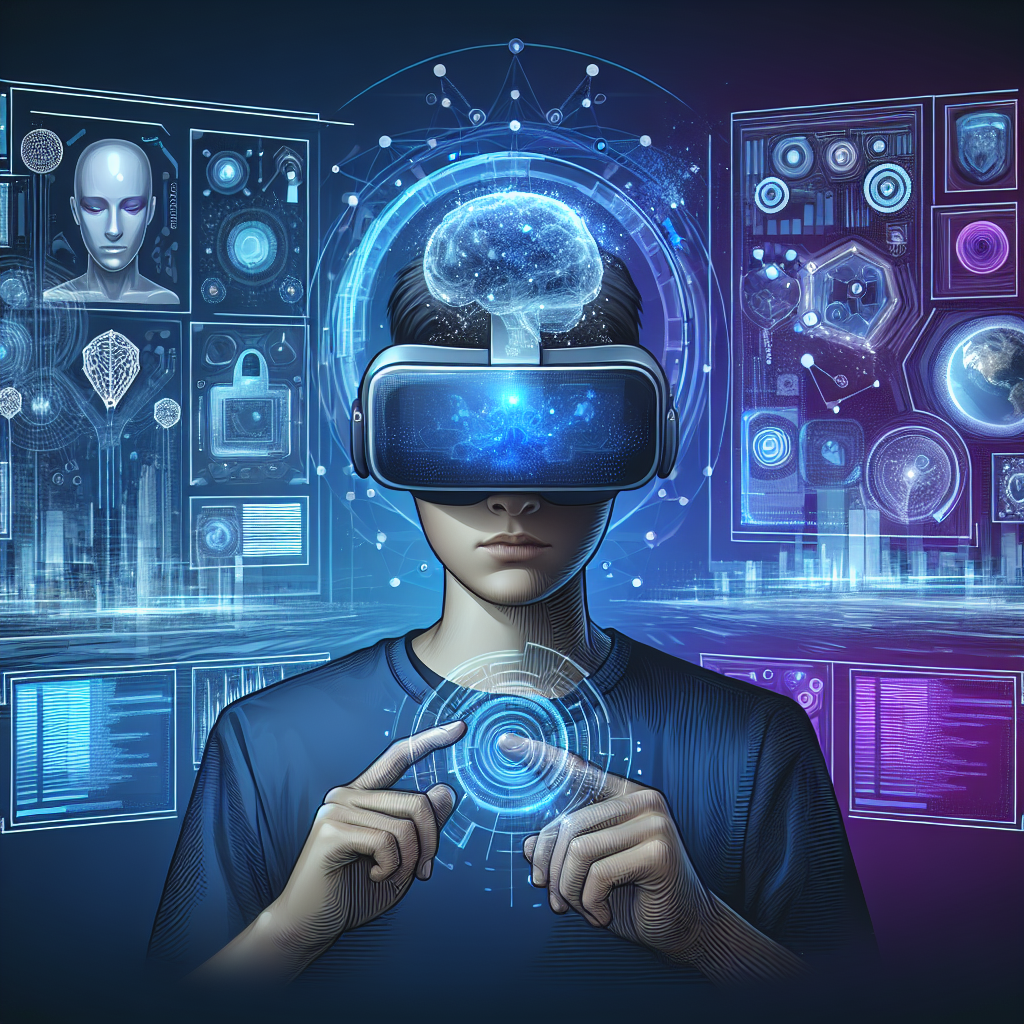Artificial Intelligence (AI) and Virtual Reality (VR) are two cutting-edge technologies that are rapidly transforming the way we experience and interact with the world around us. When combined, these technologies have the potential to create truly immersive experiences that blur the line between the physical and digital worlds. In this article, we will explore how AI and VR are being used together to create immersive experiences, as well as some of the challenges and opportunities that come with this exciting new frontier.
AI and VR: A Powerful Combination
AI and VR are two technologies that have the ability to complement each other in powerful ways. AI can be used to enhance the immersive experience of VR by providing intelligent and responsive interactions within virtual environments. For example, AI-powered avatars can interact with users in real-time, providing personalized responses and adapting to the user’s behavior and preferences.
Additionally, AI can be used to create more realistic and dynamic virtual environments by generating lifelike simulations of people, objects, and environments. This can help to create a more engaging and immersive experience for users, as they feel like they are truly interacting with a living, breathing world.
On the other hand, VR can also enhance the capabilities of AI by providing a realistic and immersive platform for testing and training AI algorithms. For example, researchers can use VR simulations to train AI systems for tasks such as object recognition, navigation, and decision-making in complex environments. By providing a realistic and interactive environment for AI training, VR can help to accelerate the development of AI technologies.
Together, AI and VR have the potential to create truly immersive experiences that go beyond what is possible with either technology alone. By combining the intelligent capabilities of AI with the immersive power of VR, developers can create experiences that are more engaging, interactive, and lifelike than ever before.
Challenges and Opportunities
While the combination of AI and VR holds great promise, there are also significant challenges that must be overcome in order to fully realize the potential of these technologies. One of the key challenges is the need for powerful hardware and software to support AI and VR applications. VR requires high-performance graphics processing units (GPUs) and headsets with high-resolution displays, while AI requires powerful processors and algorithms to handle the complex computations involved in intelligent interactions.
Another challenge is the need for robust data and algorithms to support AI in VR environments. AI systems require large amounts of data to learn and adapt to user behavior, which can be difficult to obtain in virtual environments. Additionally, AI algorithms must be carefully designed and trained to provide realistic and responsive interactions within VR, which can be a complex and time-consuming process.
Despite these challenges, the combination of AI and VR also presents exciting opportunities for a wide range of industries. In the gaming industry, AI-powered avatars and intelligent virtual environments can create more immersive and engaging gameplay experiences. In the healthcare industry, VR simulations can be used to train medical professionals and provide realistic scenarios for practicing surgical procedures. In the education industry, AI-powered virtual tutors can provide personalized learning experiences for students, adapting to their individual needs and preferences.
Overall, AI and VR have the potential to revolutionize the way we experience and interact with the world around us. By combining the intelligent capabilities of AI with the immersive power of VR, developers can create truly immersive experiences that push the boundaries of what is possible with technology.
FAQs
Q: How are AI and VR being used together in the gaming industry?
A: In the gaming industry, AI and VR are being used together to create more immersive and engaging gameplay experiences. AI-powered avatars can interact with players in real-time, providing intelligent and responsive interactions. Virtual environments can also be enhanced with AI-generated simulations of people, objects, and environments, creating a more realistic and dynamic gaming experience.
Q: How are AI and VR being used together in the healthcare industry?
A: In the healthcare industry, AI and VR are being used together to train medical professionals and provide realistic simulations for practicing surgical procedures. AI-powered virtual environments can simulate complex medical scenarios, allowing doctors and nurses to practice their skills in a safe and controlled environment. VR can also be used to provide immersive experiences for patients, such as virtual reality therapy for pain management or anxiety reduction.
Q: What are some of the challenges of combining AI and VR?
A: One of the key challenges of combining AI and VR is the need for powerful hardware and software to support these technologies. VR requires high-performance GPUs and headsets, while AI requires powerful processors and algorithms. Additionally, AI algorithms must be carefully designed and trained to provide realistic and responsive interactions within VR environments, which can be a complex and time-consuming process.
Q: What are some of the opportunities of combining AI and VR?
A: The combination of AI and VR presents exciting opportunities for a wide range of industries. In the gaming industry, AI-powered avatars and intelligent virtual environments can create more immersive gameplay experiences. In the healthcare industry, VR simulations can be used to train medical professionals and provide realistic scenarios for practicing surgical procedures. In the education industry, AI-powered virtual tutors can provide personalized learning experiences for students.
In conclusion, AI and VR are two technologies that have the potential to revolutionize the way we experience and interact with the world around us. By combining the intelligent capabilities of AI with the immersive power of VR, developers can create truly immersive experiences that push the boundaries of what is possible with technology. While there are challenges to overcome, the opportunities of combining AI and VR are vast and exciting, offering new possibilities for gaming, healthcare, education, and more.

